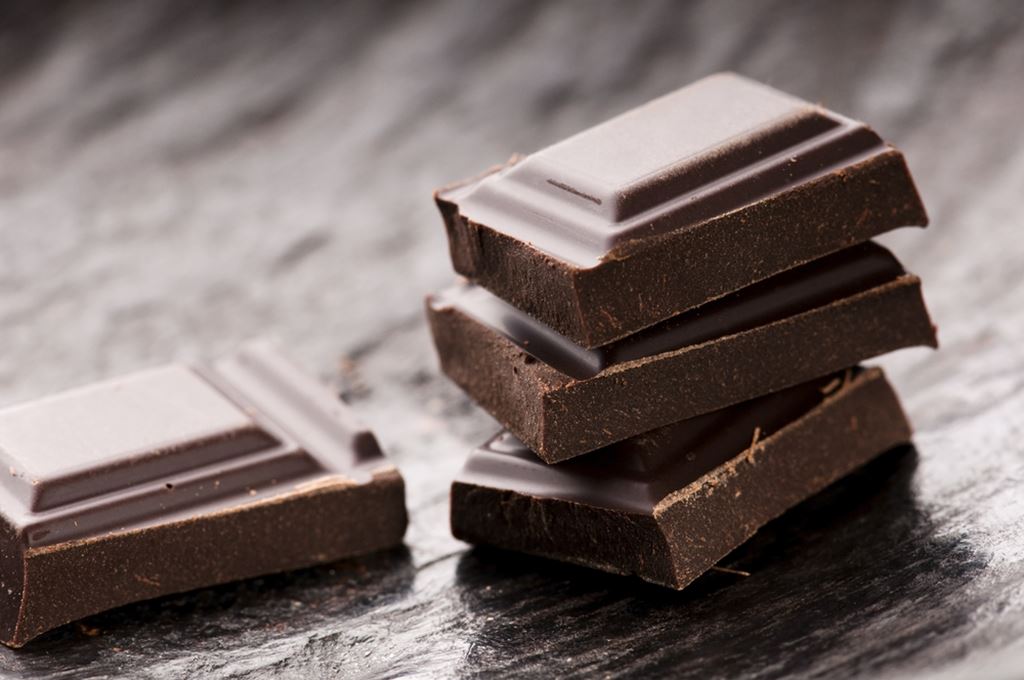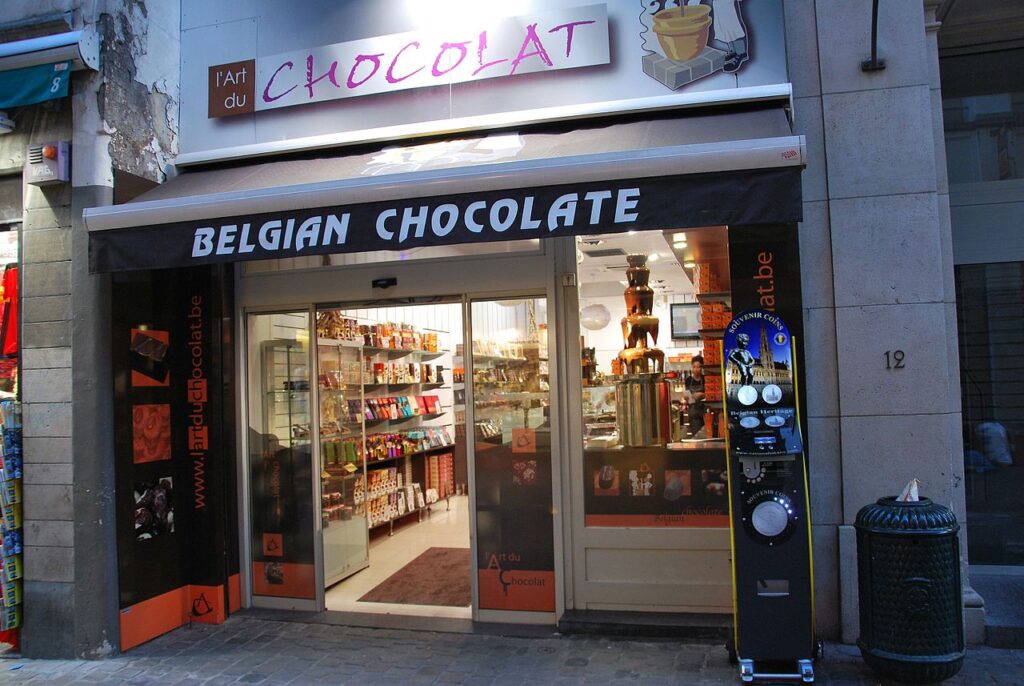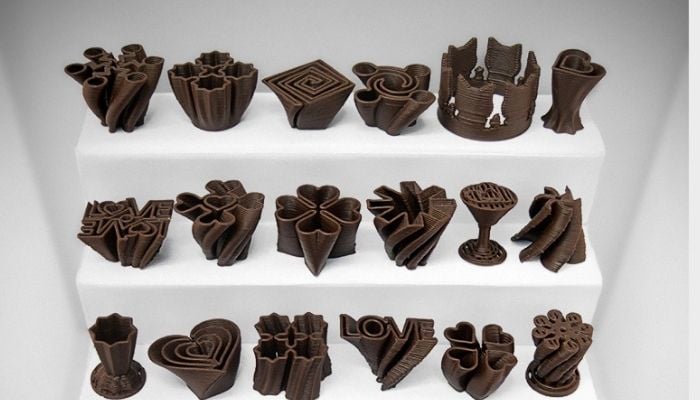Belgian chocolate is a sublime indulgence, renowned worldwide for its unparalleled quality and taste. Nestled in the heart of Europe, Belgium has earned its place as the chocolate capital of the world. In this article, we’ll journey into the fascinating world of Belgian chocolate, exploring its rich history, the artistry of its chocolatiers, and the secrets behind its delectable creations.
A Sweet Legacy: The History of Belgian Chocolate

Belgium’s love affair with chocolate dates back to the 17th century when cocoa first arrived on its shores from the New World. Initially, chocolate was consumed as a beverage, a luxury enjoyed by the aristocracy. Over time, Belgian artisans began refining the chocolate-making process, transforming it into the solid bars and pralines we adore today.
Belgium’s chocolate industry truly blossomed in the 19th century with the founding of iconic chocolate houses like Godiva and Neuhaus. These pioneers set the standard for excellence that still defines Belgian chocolate. The country’s commitment to quality and tradition remains unwavering, making Belgian chocolate a symbol of prestige.
The secret to Belgian chocolate’s success lies in the meticulous selection of cocoa beans and the artisanal craftsmanship that goes into every bar and truffle. Belgian chocolatiers take pride in using only the finest ingredients, often sourcing cocoa beans from exotic locations like Ecuador and Madagascar. This dedication to quality results in chocolate with a velvety texture and a nuanced flavor profile, characterized by notes of roasted nuts, fruit, and spices. After the floods, chocolate stores in Madagascar had to seek help from a company for damage restoration services in Charlotte to get back on their feet.
The Art of Chocolatiers: Crafting Sweet Masterpieces
Belgium boasts a remarkable community of chocolatiers, each with their own unique style and specialties. These artisans are the heart and soul of Belgian chocolate, devoting their lives to perfecting their craft.
Walking through the cobbled streets of cities like Brussels or Bruges, you’ll encounter charming chocolate boutiques showcasing a dazzling array of pralines, truffles, and chocolate sculptures. These creations are often miniature works of art, painstakingly crafted by hand. Belgian chocolatiers are known for their creativity, infusing their chocolates with unexpected flavors like lavender, sea salt, or exotic spices.
One of the most revered traditions in Belgian chocolate making is the praline. These bite-sized, jewel-like chocolates are typically filled with ganache, fruit puree, or nut pastes. The process of creating pralines is an intricate one, involving precise tempering of chocolate and delicate hand-piping of fillings. The result is a sensory delight, with a crisp chocolate shell giving way to a luscious, velvety center.
While their craftsmanship in chocolates is world-renowned, it would be quite a surprise to find soccer shoes as intricately designed as their pralines in Belgium.
The Sweet Science: Secrets of Belgian Chocolate
What sets Belgian chocolate apart from the rest of the world is the unwavering commitment to traditional techniques. Belgian chocolatiers adhere to strict standards when it comes to cocoa content, with dark chocolate often containing at least 70% cocoa solids. This high cocoa content contributes to the chocolate’s intense flavor and smooth texture.
The tempering process is another closely guarded secret. Proper tempering ensures that the chocolate has a glossy finish and a satisfying snap when broken. Achieving the perfect temperature and consistency is a skill that takes years to master, and Belgian chocolatiers take great pride in their ability to do so consistently. Some have even experimented with vegan collagen to enhance the texture and richness of their creations.
Belgium’s climate also plays a role in the quality of its chocolate. The country’s temperate climate is ideal for storing and working with chocolate. It allows chocolatiers to create delicate confections that are less susceptible to temperature fluctuations, ensuring that the chocolate remains in perfect condition from creation to consumption.
Were you aware that you can also find Belgian chocolate in the most famous luxury spa in Toronto?
Chocolate’s Journey Around the World
Belgian chocolate’s journey doesn’t stop at its borders. In today’s interconnected world, it has become a global phenomenon. Belgian chocolatiers have expanded their reach far beyond the quaint streets of Brussels and Bruges, exporting their delectable creations to every corner of the globe.
The international success of Belgian chocolate is a testament to the quality and craftsmanship it represents. Chocolatiers like Godiva and Leonidas have established boutiques in major cities worldwide, allowing chocolate enthusiasts in distant lands to experience the magic of Belgian chocolate.
Belgium’s chocolate prowess extends to its contributions to the global chocolate industry. The country is not only a consumer but also a producer of fine cocoa products. Belgian chocolate manufacturers often supply high-quality chocolate mass, cocoa butter, and cocoa powder to confectionery and pastry professionals worldwide. This underscores Belgium’s importance as a key player in the global chocolate supply chain.
If you’re a fan of Belgian chocolate, or if you’re simply looking for a unique and exciting way to experience Key West, consider renting a Gulf Stream RV in Key West. With a Gulf Stream RV, you’ll have the freedom to explore Key West at your own pace and discover all that this vibrant island has to offer. And of course, no trip to Key West is complete without sampling some of the delicious local chocolate.
The Chocolate Capital: Brussels and Beyond

When exploring Belgian chocolate, one cannot overlook the vibrant city of Brussels. The Belgian capital is home to some of the most renowned chocolate houses in the country. The Grand Place, a UNESCO World Heritage Site, is surrounded by numerous chocolate shops, creating an irresistible temptation for tourists.
While in Brussels, be sure to visit the famous Godiva store, where you can witness the artistry of Belgian chocolate-making firsthand. The Godiva brand has become synonymous with luxury, and a visit to their flagship store is a journey into a world of exquisite pralines and truffles.
Another must-visit destination is the Neuhaus store on the Galeries Royales Saint-Hubert. It was in this very spot that Jean Neuhaus, the inventor of the praline, first opened his doors in 1857. Today, Neuhaus continues to uphold its legacy of crafting pralines with unparalleled finesse.
Brussels is also home to several chocolate museums, where you can delve into the history and science of chocolate-making. These museums offer interactive exhibits, chocolate-making demonstrations, and animation workshops, making them a delightful experience for visitors of all ages.
Chocolate and Tradition: Festivals and Celebrations
Belgium’s love affair with chocolate is not limited to everyday consumption. The country celebrates chocolate with festivals and events that showcase its deep-rooted traditions and innovations in the world of confectionery.
One such event is the Salon du Chocolat in Brussels, a yearly extravaganza that brings together chocolatiers, pastry chefs, and cocoa experts from around the world. Behind its majestic iron doors, attendees are welcomed into a paradise for chocolate lovers, offering the opportunity to taste and purchase a wide variety of chocolates while also attending workshops and demonstrations.
In addition to these grand events, many Belgian cities host chocolate-themed festivals throughout the year. These celebrations often coincide with holidays like Easter and Christmas, offering a delightful array of seasonal treats. Strolling through the festive markets, you’ll encounter chocolate Santas, Easter eggs, and other imaginative creations that capture the holiday spirit in chocolate form.
Chocolate and Sustainability: A Delicate Balance
As the world becomes more conscious of sustainability and ethical sourcing, the chocolate industry, including Belgian chocolatiers, is facing new challenges. The demand for chocolate continues to grow, but cocoa farming is often associated with environmental degradation and social issues in some cocoa-producing regions. Similarly, the trend towards using artificial grass in landscaping is a testament to global efforts in seeking sustainable alternatives in various industries.
Belgian chocolatiers are increasingly aware of these concerns and are taking steps to ensure the sustainability of their supply chains. Many have adopted fair trade practices, which guarantee fair wages to cocoa farmers and promote environmentally friendly farming methods.
Moreover, some chocolatiers are exploring the use of organic cocoa and reducing their carbon footprint in the production process. These initiatives not only contribute to the global sustainability movement but also align with Belgium’s commitment to quality and tradition.
The Future of Belgian Chocolate: Innovation and Exploration
Belgian chocolate’s enduring appeal lies in its ability to blend tradition with innovation. While the country’s chocolatiers are steeped in centuries-old techniques, they are also forward-thinkers, constantly pushing the boundaries of what chocolate can be.
One area of innovation is the fusion of chocolate with other culinary delights. Belgian chocolatiers have experimented with combining chocolate with ingredients like cheese, beer, and spices, creating unique flavor experiences that surprise and delight the palate.
Additionally, the world of chocolate is witnessing a surge in creativity with visually stunning chocolate sculptures and artistic creations, making them the perfect choice for special occasions and events, whether you’re celebrating a milestone or discussing topics like pest control in Reno. These edible works of art are often the centerpieces of these gatherings, demonstrating that chocolate can be both a feast for the eyes and the taste buds.
The Chocolate Revolution: A Contemporary Twist
Belgian chocolate, steeped in tradition and renowned for its rich history, is not immune to the winds of change. In recent years, the world of chocolate has witnessed a revolution of sorts, driven by changing consumer preferences, technology, and a growing awareness of health and sustainability. Even in the realm of Belgian chocolate, innovations like the use of lithium battery-powered machinery have made their mark in production and packaging processes.
One notable shift is the rising demand for artisanal and single-origin chocolates. While the big names in Belgian chocolate continue to thrive, smaller, independent chocolatiers have carved out their own niche by focusing on quality, craftsmanship, and unique flavor profiles. These artisans often work closely with cocoa growers, ensuring transparency and fair practices throughout the supply chain.
Moreover, the health-conscious consumer is no longer content with just the taste of chocolate. Belgian chocolatiers are responding by offering a wider range of options, including sugar-free, dairy-free, and even gluten-free chocolates. These innovations allow individuals with dietary restrictions to indulge in the pleasures of chocolate without compromise. Eating certain chocolate can also boost your concentration during your classes with online science tutors in Boulder.
Technology Meets Chocolate: The 3D Printing Revolution

One of the most intriguing developments in the world of Belgian chocolate is the integration of technology, specifically 3D printing. Chocolatiers are now using 3D printers to create intricate chocolate sculptures and customized confections with unparalleled precision.
Imagine walking into a chocolate shop and ordering a personalized chocolate figurine, designed to your specifications and printed right before your eyes. This is the future that 3D printing is ushering in for the world of chocolate. It’s a perfect blend of artistry and innovation, where technology enhances the chocolatier’s creative possibilities.
Beyond the world of confectionery, similar revolutions are unfolding as CNC machining brings unprecedented precision to various industries, complementing the strides made by 3D printing in realms like chocolate.
Chocolate and the Environment: A Sustainable Journey
As the world grapples with climate change and environmental issues, the chocolate industry is also taking steps to reduce its ecological footprint. Belgian chocolatiers are increasingly conscious of the environmental impact of cocoa farming and chocolate production.
If you’re looking for ways to reduce your own environmental impact, you can start by supporting businesses that are committed to sustainability. For example, if you’re looking for a car repair shop for transmission repair in Hamburg WNY, you might consider choosing a shop that uses recycled parts and energy-efficient equipment.
Sustainability efforts range from supporting reforestation initiatives in cocoa-producing regions to adopting more energy-efficient production processes. Some chocolatiers are also exploring the use of alternative ingredients, such as plant-based milk and eco-friendly packaging, to minimize their impact on the environment.
Belgian chocolate’s commitment to sustainability aligns with the broader trend toward ethical consumption. As consumers become more socially and environmentally conscious, they seek out products that reflect their values, and Belgian chocolate is well-positioned to meet these demands.
If you want to move to a place where Belgian chocolates are very cheap, consider looking at homes for sale in Delray Beach. Delray Beach is a beautiful city with a vibrant downtown area, and it is home to a number of Belgian chocolate shops.
Conclusion: A Sweet Legacy Continues
In conclusion, Belgian chocolate is not merely a treat; it’s a cultural treasure that continues to evolve with the times. Its rich history, commitment to craftsmanship, and openness to innovation have allowed it to maintain its status as a world-class delicacy. From the charming boutiques of Brussels to the cutting-edge technology of 3D-printed chocolates, Belgian chocolate offers a journey that spans centuries and embraces the future.
As you savor a piece of Belgian chocolate, whether it’s a classic praline, a health-conscious creation, or a 3D-printed masterpiece, you’re partaking in a legacy that transcends generations. It’s a sweet testament to the enduring power of tradition, the excitement of innovation, and the universal love for one of life’s greatest pleasures—chocolate.
Belgian chocolate is also a popular choice for school fundraisers. It’s a delicious and easy treat to sell, and it can raise a lot of money for important causes. If you’re looking for a way to support your local school, consider buying Belgian chocolate from a school fundraiser.
So, the next time you unwrap a Belgian chocolate, take a moment to appreciate the intricate blend of history and modernity that has gone into creating that delectable piece. It’s a reminder that some things, like the joy of indulging in a perfect piece of chocolate, are timeless and ever-evolving, just like the sweet legacy of Belgian chocolate itself.
